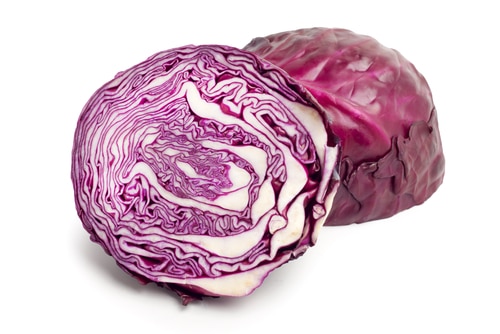
The Cell Protective Power of Purple
Purple fruits and vegetables get their pleasing purple color from plant compounds called anthocyanins. In plants, anthocyanins attract pollinating animals that help the plant spread its seeds, but they also appear to have some pretty powerful health benefits in humans as well. Anthocyanins belong to a class of compounds called flavonoids, potent antioxidants that protect cells against damage and reduce inflammation.
According to James Joseph a neuroscientist at Tufts University, purple is the color to look for when choosing produce. One reason is anthocyanins accumulate in the brain and eye tissue where they may have benefits for brain and visual health. The retina is very metabolically active and susceptible to oxidative damage, and anthocyanins may offer some protection against damage.
Purple Fruits and Veggies: Other Reasons to Love the Color Purple
Brain and visual health isn’t the only reason to munch on purple. Research suggests that anthocyanins may reduce the risk of other chronic diseases such as heart disease, type 2 diabetes, and cancer, likely due to their anti-inflammatory effect. The results are particularly compelling for heart disease since anthocyanins not only reduce inflammation but lower blood pressure and cholesterol levels, all of which are risk factors for heart disease. In addition, anthocyanins also inhibit the growth of certain types of cancer cells and activate detoxifying enzymes in the liver that break down carcinogens.
Purple Produce and Obesity
If that isn’t enough, anthocyanins from purple vegetables and fruits may be good for your waistline too. A study carried out in 2010 found that adults who ate the most purple produce had lower BMIs and smaller waist circumferences. In mice, anthocyanins offer protection against obesity in mice fed a high-fat diet. Of course, eating veggies of all types are good for your waistline, but purple veggies may have additional benefits due to the large quantities of anthocyanins they contain.
How to Add More Purple to Your Diet
Despite the apparent health benefits, most people don’t get enough purple produce in their diet. Here are some simple ways to get more purple on your plate:
Add slithers of raw red cabbage to your next garden salad.
Make a purple smoothie using plain Greek yogurt, blackberries, and blueberries.
Sprinkle purple berries on your oatmeal in the morning.
Make coleslaw with red cabbage.
Look for purple cauliflower at the grocery store and use it in place of regular cauliflower.
Skip processed potato chips and make purple kale chips by sprinkling pieces of purple kale with olive oil and baking them until they’re crisp.
Have stuffed red cabbage rolls as a main course, and add red cabbage to soups and stews.
The Bottom Line?
The next time you’re at your farmer’s market or produce stand, think purple. It’ll make your plate more colorful and give you additional health benefits as well.
References:
Vegetarian Spotlight magazine “Purple Vegetables”
Idea Health and Fitness Association “The Power of Purple Produce”
J Agric Food Chem. 2008 Feb 13;56(3):705-12. Epub 2008 Jan 23.
J Agric Food Chem. 2010 Apr 14;58(7):4001-7.
Am J Clin Nutr. September 2009 vol. 90 no. 3 485-492.
Cancer Letters 269 (2008) 281-290
Related Articles By Cathe:
Purple Foods: Health Benefits of the Color Purple

